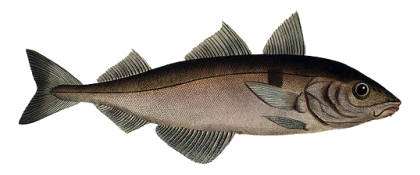The haddock (family Gadidae, like for example cods) has been harvested commercially off the Eastern coast of North America (USA, Canada) since the 19th century. Fishing pressure on these stocks had markedly increased in the latter half of the 20th century, also because of important advancement in fishing technology.
Since the 1930’s the George’s bank haddock stock has been monitored (Brodziak et al. 2006). From a simple glimpse at the time series of total catch since this began, the following becomes apparent:
- Yearly catches fluctuated (with some exceptions) around 40’000 tons until the 1960’s.
- During the 1960’s (but also sporadically before) fishing pressure showed a sharp increase.
- Within subsequent decades, yearly catches fell rather dramatically and fluctuated between 5’000-20’000 tons.
In short, the system had collapsed. Fishing pressure was soon reduced; however, that did not really aid the population to return to its former heights.
The term “collapse” requires a refined description in this case, as stock levels nonetheless were fluctuating at low levels. Collie et al. (2004) tackled the question with a mathematical model. Their (summarized) results, corroborated by data:
- The system haddock-fishery is characterized by so-called multiple stable states: depending on one or several critical parameters (incl. fishing pressure) a population can either fluctuate around a higher stable equilibrium or a lower stable one.
- Systems displaying multiple stable states can show hysteresis – and this is also the case for the haddock fishery:
- By trespassing a certain critical parameter value, e.g. by increasing fishing pressure, the population size “collapses” from the higher to the lower stable equilibrium.
- Just by reducing the parameter’s value below the critical value does not help in getting the population to the higher equilibrium: depending on the system’s characteristics the parameter value has to be markedly diminished to return to the higher state.
The human brain can handle linear phenomena with certain ease. However, as soon as nonlinear effects appear at the horizon (e.g. predator-prey system, effects of harvesting), it rapidly becomes rather speculative for the brain. Fortunately, mathematical models help us to grasp and understand these phenomena.
Literature cited:
- Brodziak, J. et al. (2006). Stock assessment of Georges Bank haddock, 1931–2004. TRAC Document, National Marine Fisheries Service, Woods Hole, MA.
- Collie, J.S. et al. (2004). Regime shifts: can ecological theory illuminate the mechanisms? Progress in Oceanography 60, 281–302.


